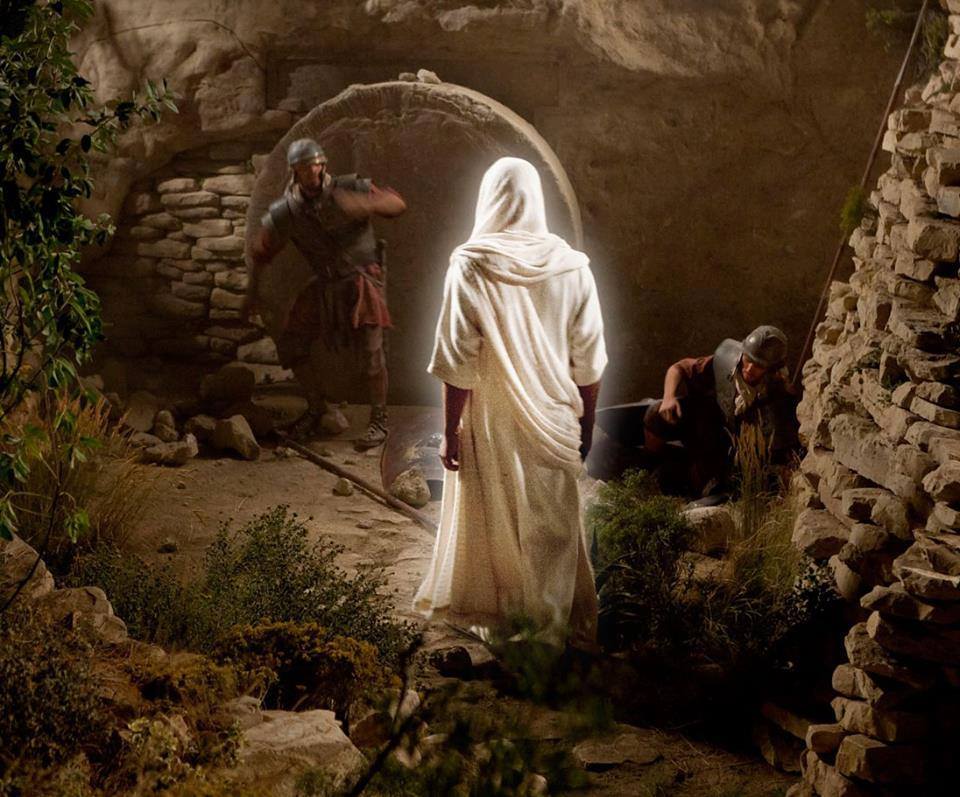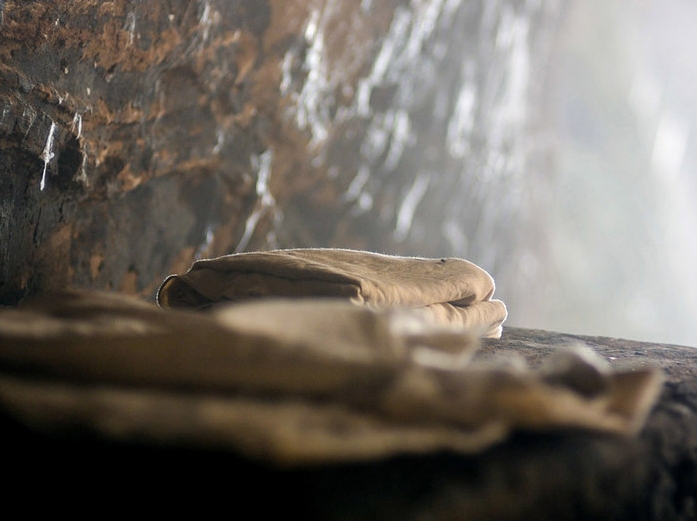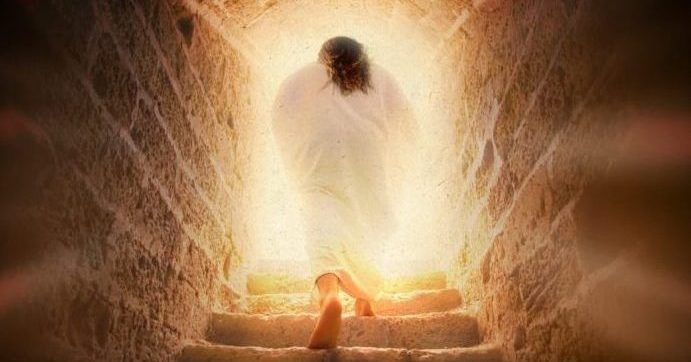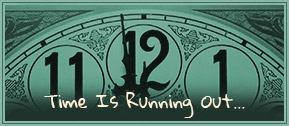
STILL The Greatest Story Ever Told
by Jack Kinsella
Good Friday is the day Christians commemorate the single most horrific event in human history — the day that mankind turned on and murdered his Creator. But that murderous event was NOT the event that brought about our redemption. Instead, it sealed our guilt.
If Jesus Christ had remained in the grave, we would still be dead in our sins.
“And if Christ be not raised, your faith is vain; ye are yet in your sins.” (1 Corinthians 15:17)
The Crucifixion of Jesus Christ was intended to be the end of the story. At least, that is the way that Satan and his minions had it planned:
“Which none of the princes of this world knew: for had they known it, they would not have crucified the Lord of glory.” (1 Corinthians 2:8)
A few years back, then-Archbishop of Canterbury George Carey published a book entitled, “Jesus 2000” in which the Archbishop argued it wouldn’t matter if that was where the story ends or not.
“Unlike the birth of Christ and the crucifixion,” he says, “Christians cannot know with the same certainty that He was resurrected. . . I can tell you frankly that while we can be absolutely sure that Jesus lived and that He was crucified on the Cross, we cannot know that He was raised by God from the dead.”
Was he right? Is the Resurrection unknowable, apart from blind faith? Was Jesus a man Who, in the words of secular historian Josephus, ‘did many amazing works’ before being judged a political criminal and executed by Crucifixion, but wasn’t literally resurrected?
There is plenty of historical evidence attesting to an historical Jesus. Is it possible that He was merely a wise man, and a good teacher, or, as the Koran claims, even a prophet. Was the Resurrection really a legend tacked on later by His followers?
Most Christians I know have admitted a momentary twinge of doubt at some point, wondering if it were at least POSSIBLE that guys like Archbishop Carey might be right.
That the Resurrection, if not an outright hoax, was a sincere effort on behalf of His followers to keep His teachings in the spotlight after His shocking and early death?
After all, it isn’t uncommon for the Jews to carefully record and revere the words of the great sages of history, like Maimondes or Ramban, the author of the Mishneh Torah.
Is it possible to be a Christian and question whether Jesus was raised from the dead? If Jesus lived and died but was not resurrected, would His Death be enough to secure our redemption? In a word, no.
And Archbishop Carey is wrong when he says that there is no way to know with certainty that He was resurrected. And it makes a BIG difference.
“And if Christ be not risen, then is our preaching vain, and your faith is also vain.” (1st Corinthians 15:14)
If Jesus Christ was not resurrected from the grave, then, by Paul’s own admission, our faith is in vain. Our faith is NOT in the fact Jesus lived and died. Every man that ever lived has died. Or will die. There is nothing special about death.
“And as it is appointed unto men once to die, but after this the judgment:” (Hebrews 9:27)
The fact that Jesus died on the Cross means, first and foremost, that Jesus was an ordinary man. He lived an extraordinary life. But He died, which is the epitome of ordinary.
We all die. Death is the penalty for Adam’s sin. When Jesus died, the hounds of hell rejoiced because it reduced Jesus Christ, the Lord of Glory, to the status of ordinary manhood. Indeed, if former Archbishop of Canterbury George Carey is right, then the Greatest Story Ever Told should have ended at His grave.
And so it would have. And since the two greatest earthly authorities in Judea at that time wanted the story to end there, it should have.
Assessment:
The Sanhedrin controlled every aspect of Jewish religious life, while the Romans controlled every aspect of secular life.
The reason the Jews took Jesus to Pilate to be put to death was to put an end to the “Jesus movement”. The reason Pilate agreed was to prevent a rebellion. Both had every reason to insist that Jesus died on Calvary and was buried, once and for all.
The death of Jesus was a major political event. As a consequence, so many security precautions were taken with the trial, crucifixion, burial, entombment, sealing, and guarding of Christ’s tomb that the circumstances would be well publicized throughout the Jewish community.
Jesus’ tomb was sealed with a Roman seal. The penalty for breaking it was crucifixion. The Apostles had proved themselves no heroes so far. All had abandoned Him and Peter denied Him three times. It is unlikely they would risk breaking a Roman seal to perpetuate a hoax.
When they found the empty tomb, the disciples didn’t fan out to the far reaches of the Empire with their story. They went straight back to Jerusalem. If their claim was false, it would be the last place to try and preach it.
The story wouldn’t have lasted a single day in Jerusalem if the empty tomb were not already an established fact.
In addition to the claims of the Apostles, both Roman and Jewish records of antiquity admit an empty tomb. People could come and see it was empty for themselves. They could see the stone that had been rolled back.
Coming as it does from such hostile sources, it adds even greater weight to the historical evidence.
The tomb was not just sealed with the seal of Rome, it was sealed with a two and a half ton boulder and guarded by Roman soldiers. If they WERE asleep (a death penalty offense) then somebody would have had to have quietly moved a 5,000 pound boulder without waking them.
Inside the empty tomb were the grave clothes, still bearing the form of a body, but empty. That precludes any possibility that Jesus was entombed alive and that He somehow escaped.
It also eliminates any possibility that His Body was stolen. In either case, the grave clothes would have to be unwrapped. Instead, they lay there as if the contents had vanished. The burial napkin was neatly folded beside where His head should have been.
The burial napkin sent a message all on its own. In local custom, when the master of the house finished a meal, he would wad up his napkin and throw it on the plate, signalling to his household staff that the meal was over.
If instead, he was excusing himself for some other reason before finishing, he would fold his napkin neatly and lay it beside the plate, signalling to his household staff that “I am coming back.”
Then there are the Apostles themselves to consider.
Preaching a resurrected Jesus Christ meant social suicide. They were disowned by their families and their faith, were arrested, imprisoned and ultimately given the choice of a slow, painful execution or admitting they made it up.
“For we have not followed cunningly devised fables, when we made known unto you the power and coming of our Lord Jesus Christ, but were eyewitnesses of His Majesty,” writes Peter. (2nd Peter 1:16)
If they KNEW that their ‘preaching was in vain’ as Paul called it, then they knowingly threw away their lives for nothing. What if it was you? What if you knew Jesus as well as they did? What if you had been with Him and witnessed what they witnessed?
You saw Him heal the sick, raise the dead, give sight to the blind and walk on water. You saw Him ascend into heaven. You heard Him promise you specifically that no matter what happens here, heaven awaits.
Then along comes some despot and says, “if you don’t deny what you heard, saw, and experienced, we will send you to Heaven right now!”
So, you KNOW that Jesus did all those things and that He is God. OR — and this is the BIG ONE — you KNOW that He did not and is not. You were THERE. You KNOW.
Ok, got that? You KNOW, right? So when you are offered the choice of denying what you know or dying, what do you do?
Before you answer, since you were a witness, remember there are TWO possibilities. In the one possibility, you KNOW He is a fraud. In the other, He MUST be God.
Looked at from that perspective, figuring out which possibility was the right one is easy. Nobody dies to knowingly perpetuate a lie. One guy? Well, maybe he is nuts. But ALL of them?
Jesus Christ was executed at Golgotha in full view of thousands of witnesses. Three days later, He was resurrected bodily and over the course of the next forty days seen alive by thousands more witnesses.
The story of His resurrection was unchallenged by living eyewitnesses, and so profoundly changed them that Saul of Tarsus, a Pharisee who despised Christ and persecuted His followers, became the Apostle Paul, the greatest witness to the truth of the Resurrected Jesus. As Paul wrote to his disciple, Timothy,
“For the which cause I also suffer these things: nevertheless I am not ashamed: for I know Whom I have believed, and am persuaded that He is able to keep that which I have committed unto Him against that day.” (2nd Timothy 1:12)
The story was unchallenged because it was true then. And it is true now. He is Risen!
Happy Resurrection Sunday!
The Eyewitness Testimony That’ll Make You Never Doubt the Resurrection Again
( Make sure you visit the highlighted link for the rest of the article as well as short videos and other links!! )
Christianity’s core belief is that the Son of God took on human form, died for our sins and then rose from the dead to give us eternal life. But if Jesus Christ didn’t come back to life, it undoes His claim to be the all-powerful, eternal Son of God, Savior and Messiah. So, Christianity hangs on the Resurrection.
To believe the events around that first Easter, you pretty much have to believe that Jesus did indeed exist and that the New Testament can be trusted.
At the Impact 360 school in Pine Mountain, Georgia, Prof. Jonathan Morrow preps college-bound Christians in how to fight with the facts of their faith.
Jesus Isn’t Just in the Bible
He told CBN News, “Investigating the Resurrection is a historical question that you can do with eyes wide open; it’s not a blind faith kind of thing, like believing in the Easter Bunny or a lucky rabbit’s foot. This is real world kind of stuff. And you can investigate the data for it.”
Morrow added, “So when it comes to the Resurrection, we say ‘Well, how do we know Jesus existed?’ Some people even doubt that. The fact is, we have far more sources for Jesus of Nazareth than we do for many historical figures in the first century. We have at least 18. Twelve of those are non-Christian sources.”
There’s more evidence Jesus existed than Julius Caesar. Anyone doubt Caesar existed?…..MORE at LINK
And another awesome article below by my friend Ted Weichert posted at the God In A Nutshell site:

Jesus: Risen King’s Resurrection Appearances Examined by Skeptics, Atheists & Science
By: Ted Wiechert
“Certain truths known through means other than science must be in place before science can begin testing for other truths.” -quote from Greg Koukl, Christian apologist, radio talk show host, author, speaker, and the founder of the Christian apologetics organization “Stand To Reason”
Many disputes through the ages have arisen about Jesus, the Christ, especially surrounding his divine resurrection appearances. Even contemporary, in house disputes among his own followers took place, notably with the “Doubting ‘Thomas” Disciple who said “Unless I see in His hands the imprint of the nails, and put my finger into the place of the nails, and put my hand into His side, I will not believe” (John ch.20: vs.25). I don’t expect the hard skeptics to believe the gospel account of how that played out since it’s couched within context of that which many only assign to as “legend,” only to contend with the eventuality that faith is the transcendent step to understanding the resurrection. We all presuppose at some point, exceeding scientism, with relative satisfaction of all available data, and as Dr.Gary Haberman was quoted: “Our rules need to be adjusted that we make for ourselves.”
Bart D. Ehrman, one of the most prominent skeptics and a self-proclaimed “agnostic leaning towards atheism”, asserts the New Testament book of Romans, 1st & 2nd Corinthians, Galatians, Phillipians and 1st Thessalonians “are the authentic ‘Pauline espistles,’ no one is gonna’ give you problems if you use this material.” According to Dr.Gary Habermas, though skeptics don’t accept everything the New Testament Apostle Paul wrote as true or inspired, they accept “he was in the right place, at the right time, we know who he was, he was a scholar who was changed by this message [of Christ]; adding to that, Dr. Habermas elaborates that “Paul knew what was going on, and knew the other people who knew what was going on: ‘He knew the other eyewitnesses.”…..MORE at LINK
Bonus: 12 Historical Facts (Most Critical Scholars Believe These 12 items)
And yet another good article to consider as evidence for Jesus and his resurrection! (Visit link for videos and other references!)

He Is Risen: Historical Evidence That Jesus Rose From The Dead
By James Bishop
Did Jesus really rise from the dead? Is there any evidence that this actually happened, or is this just a product of myth, legend, or religious wishful thinking? As it turns out, the resurrection of Jesus is well supported by historical evidence and serves as the best explanation for the facts surrounding his life, death, and the emergence of early Christianity.
In this article we shall focus on…..MORE at LINK


